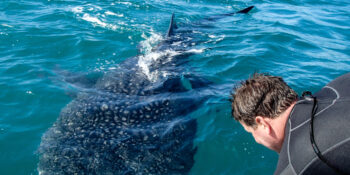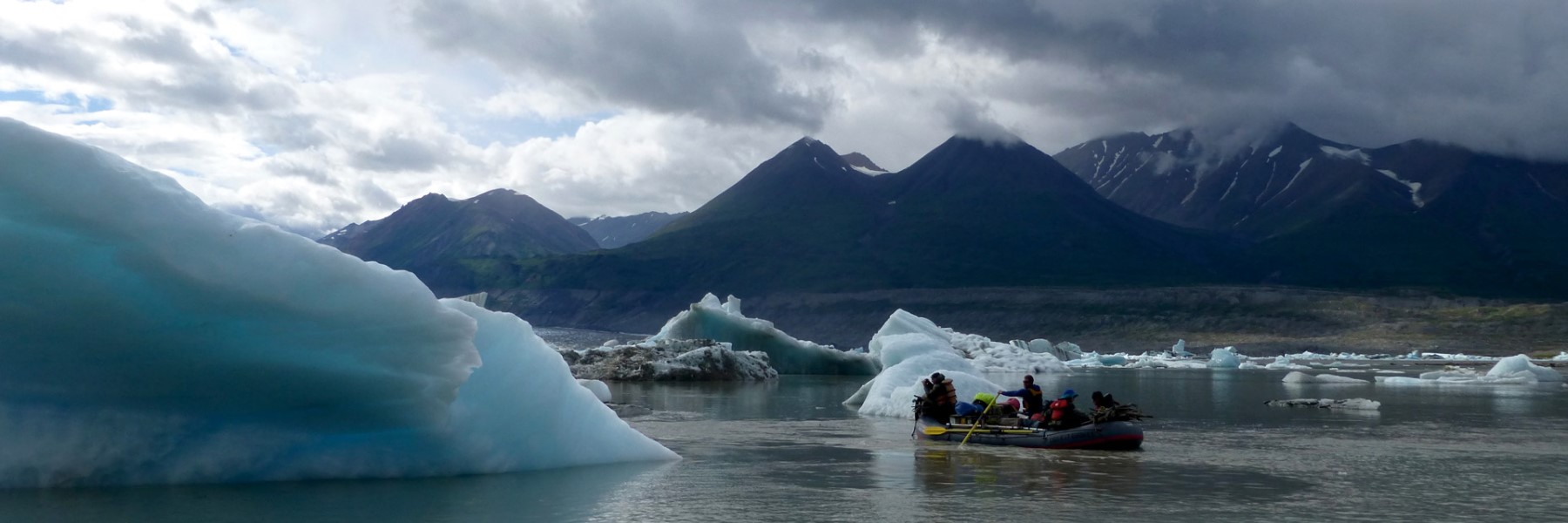
Alaska Rafting: Remote Wilderness River Expeditions
Home to some of the most breathtaking wilderness in the world, rafting Alaska’s remote rivers provides the best way to explore the country. In this article, we discuss the top multi-day Alaskan rafting rivers, including the miles and duration of each trip, whitewater rating, wildlife, cost, access and how the trips are unique.
In general, Alaskan multi-day rafting trips are about the access to the country and not the whitewater. The rivers are so cold that putting people in the river is pretty dangerous causing harder whitewater to be avoided. Most trips have lay-over days where they camp two nights at the same spot providing time to hike and explore. While you’re enjoying the stunning landscapes, it’s essential to stay aware of wildlife, especially bears. Check out our guide on minimizing risks with Alaska’s unique wildlife. In addition, to minimize the most annoying wildlife, mosquitos, most people prefer trips in June or late August and September.
South Western Rivers
Southern Alaska is home to several world-class multi-day rafting rivers, including the Tatshenshini, Alsek and Copper Rivers. All three rivers offer opportunities to explore remote and untouched wilderness with incredible views of mountains, glaciers, and wildlife. This area of the state is known for it’s jagged peaks and forests that aren’t seen farther north. Rafting trips here include a mix of calm floating, fun rapids and outstanding hiking.
Most rafters fly into Juneau, Alaska from Seattle for the Tatshenshini and Alsek Rivers and then take a small plane to Haines. While for a Copper River, people fly into Anchorage which has more direct flights.
The Tatshenshini River
Rafting the Tatshenshini River is one of the most popular multi-day wilderness trips in Alaska, covering for 153 miles over 10 to 14 days ($5300 to 7000). Located in the heart of the largest protected wilderness area in the world, the river flows through Tatshenshini-Alsek Provincial Park and Glacier Bay National Park and Preserve.
The trip puts-in at road-accessible Shawshe (Dalton Post), British Columbia. Take-out from Dry Bay, Alaska requires a small plane flight. Note that the Tatshenshini flows into the Alsek River and the last 25 miles are on the Alsek. National Geographic named the Tashenshini the #1 river trip in the world.

The river starts off small in forested mountains and grows dramatically as it progresses toward it’s confluence with the Alsek. In addition the terrain opens up to views of glaciers and jagged mountains. Intermittent class III+ rapids provide a little excitement but most time is spent enjoying the scenery. Along the way, rafters experience views of steep canyon walls and massive glaciers. The region is home to a variety of wildlife, including grizzly bears, bald eagles, wolves and moose.
River runners also have the chance to explore some of the historic and cultural sites along the river, including abandoned gold mines and traditional native villages. The Tlingit and other native groups have been living in the area for thousands of years.
The Alsek River
More open and expanisve than it’s sister river the Tatshenshini, Alsek River Rafting trips are one of the most challenging multi-day wilderness rafting expeditions in Alaska, spanning 174 miles over 11 to 14 days ($5800-7200). The rapids range from Class II to III with a couple of Class IV. River runners enjoy beautiful scenery of towering mountains, massive glaciers, and diverse wildlife, such as grizzly bears, moose, and wolves. The Tatshenshini flows into the Alsek at mile 124. Access put-in by road at Haines, Alaska, USA and the take-out by plane at Dry Bay, Alaska, USA.

Differences between rafting the Tatshenshini and Alsek River
The Tatshenshini and Alsek Rivers parallel each other with the Tatshenshini flowing into the Alsek 25 miles upstream of the take-out. While both rivers offer spectacular scenery, exhilarating rapids, and opportunities for wildlife viewing, there are some key differences between them. The Tatshenshini (Tat) River has fewer rapids but more opportunities for hiking and wildlife viewing. The Tat’s glacier-fed turquoise waters wind through towering mountains, lush forests, and river valleys. This river is home to a wide variety of wildlife, including bears, moose, caribou, wolves, and bald eagles.
The Alsek River, on the other hand, is more intense, with larger and more frequent rapids. The river is characterized by towering glaciers, icebergs, and rugged mountain ranges. The river flows through the Kluane National Park and Reserve, providing a habitat for a vast array of wildlife, including grizzly bears, wolves, moose, and many species of birds.
The Alsek also requires a helicopter portage around Turnback Canyon which provides stunning views of Lowell Glacier. Both the Tatshenshini and Alsek Rivers offer incredible experiences for adventurous rafters seeking to explore remote wilderness.

The Copper River (the Best Value)
The sixth longest river in Alaska, the Copper River offers a less expensive, $3000 to 4000, 6 to 8 day wilderness rafting experience. Unlike the other Alaskan Rivers, this trip requires no expensive flights to access put-in or take-out. Tours cover around 140 miles, beginning in Chitina, Alaska, and ending in Cordova, Alaska. Chitina can be reached by car from Anchorage or by bush plane. From Cordova, rafters can catch a ferry or bush plane back to Anchorage. The Copper is known for being more open than the Alsek with less intense whitewater than either of the other southern rivers.
The rapids range from Class II to Class III and the river offers stunning views of the Wrangell Mountains, Chugach Mountains and glaciers. Wildlife includes brown and black bears, moose, caribou, bald eagles, and many other species.
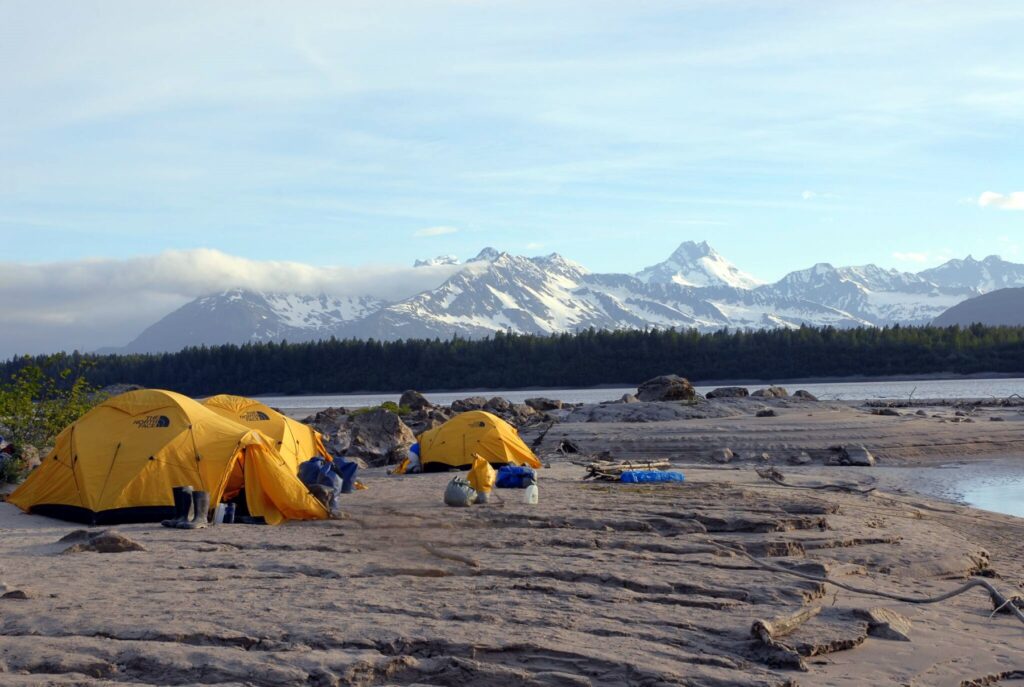
Arctic (North Slope) Rivers of the Brooks Range
These trips are typically more expensive due to flight costs of around $4500 per person to get in and out of the Brooks Range once rafters fly themselves to Fairbanks, Alaska. These rivers all flow north through Alaska into the Arctic Ocean. While the southern Alaskan Rivers offer views of towering mountains, glaciers, and forests, the North Slope Rivers provide a glimpse into the Arctic tundra, with its rolling hills, vast expanses of open sky, and dramatic landscapes. The Brooks Range provides habitat for some unique species not seen in southern Alaska including Polar Bears, musk oxen, caribou and arctic fox.
The Kongakut River
The Kongakut River is the premier remote wilderness rafting river within the Arctic National Wildlife Refuge. The river spans for 70 to 90 miles over 10 or 11 days ($6500 to 8000) with the rapids being mainly Class II with one Class III canyon. Kongakut rafting trips typically meet in Fairbanks and then take a small plane north to Arctic Village, from there an even smaller plane accesses the put-in near Kaktovik, Alaska. The take-out requires two plane flights from Ocean Camp, Alaska to Arctic Village and then back to Fairbanks.
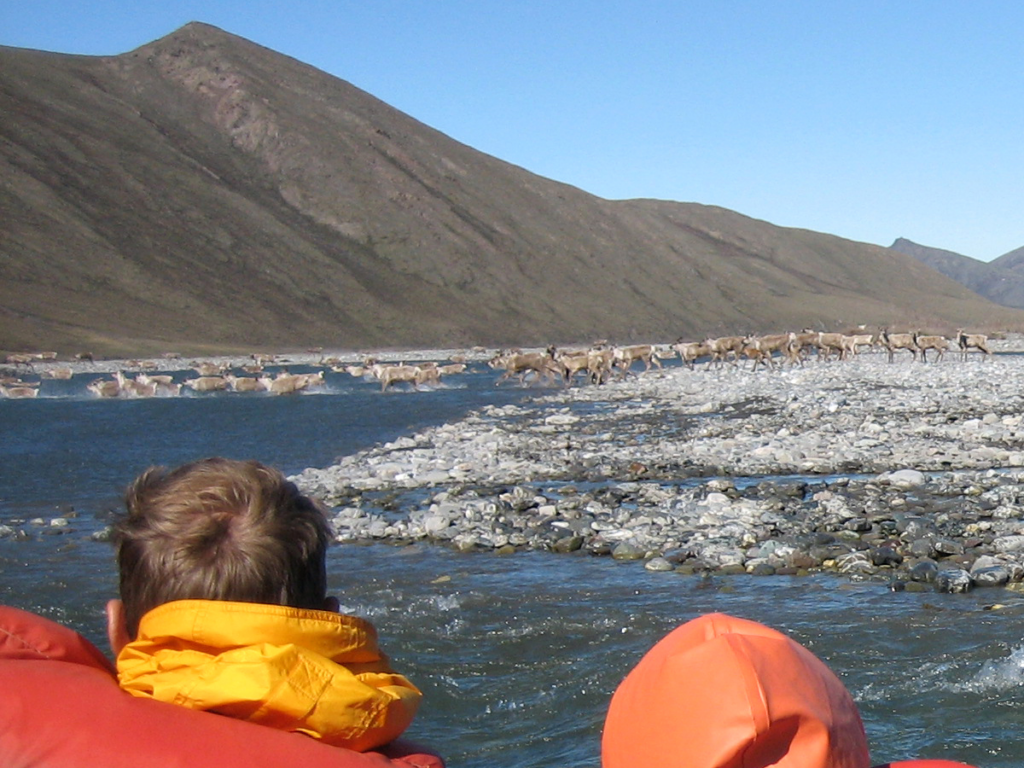
A true wilderness experience, this trip requires enduring some hardship. Rafts are typically paddle boats and at times the braided channels get shallow requiring everyone to get out to walk the rafts. Closer to the coast there can be wind requiring hours of paddling.
Kongakut trips typically have layover days spaced throughout the trip to allow hiking and exploring of side canyons and mountain ridges. Rafters enjoy stunning views of untouched landscapes and abundant wildlife. Many people go on June trips in hopes of seeing the migrating Porcupine Caribou herd. Grizzly bears, dall sheep, moose, musk ox, wolves, arctic char (dolly varden) and many species of birds have also been seen.
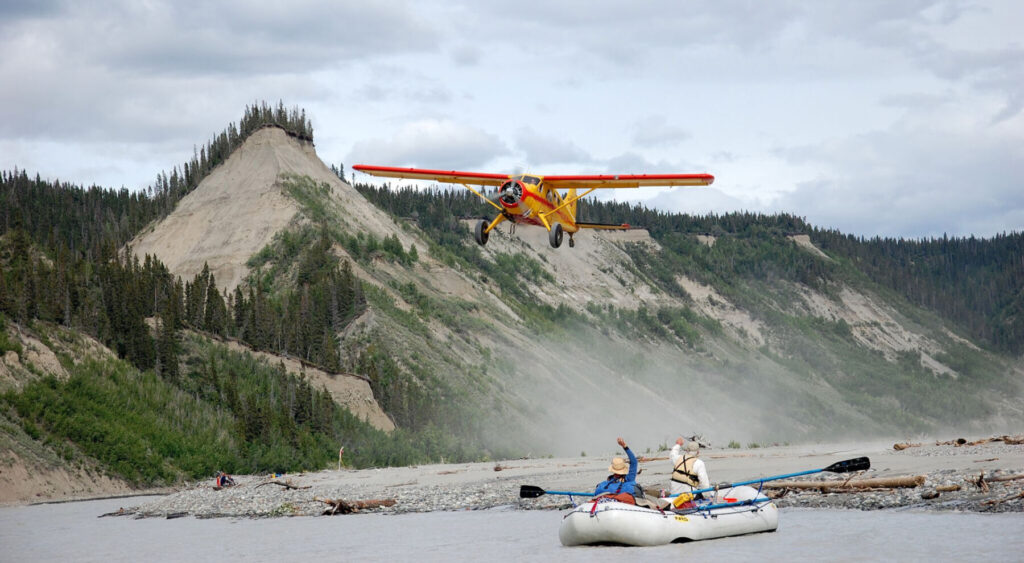
The Hulahula River
The Hulahula River is one of the most remote wilderness rafting rivers in Alaska. The river stretches for 130 miles over ten to twelve days ($6500 to 8000), lying parallel and just west to the Kongakut. Rafters can experience the stunning views of untouched landscapes and abundant wildlife, such as musk oxen, arctic foxes, and grizzly bears.
The rapids are mainly Class II with one Class III section, making it a little easier whitewater than the Kongakut but the trip is a little more rugged and less traveled. When trips near the ocean they typically must do a 1/2 mile portage to switch drainages to get all the way to the ocean. As with the Kongakut, at times everyone must get out to help drag the rafts over shallow shoals. Also, winds can be quiet strong as trips near the Arctic Ocean.

The Hulahula River is one of the most remote wilderness rivers in Alaska. The nearest towns, Arctic Village and Anaktuvuk Pass are accessible only by bush plane or snowmobile. From there a bush plane takes paddlers into the Brooks Range to the put-in. Rafters travel down the river until they reach the Arctic Ocean, where a bush plane takes them back to civilization.
Search for Alaskan Rafting Trips

Find Your Trip
Request a trip search, we’ll find tours meeting your criteria.
*** Our service is free to you and paid for by our partner outfitters. We guarantee the same price as booking directly with the outfitter.
The Noatak River
West of the Hulahula, the Noatak River is another remote wilderness Alaskan river that covers 120 miles in 10 to 14 days ($7500 to 8100). The river stretch is typically rafted or canoed since the rapids are an easier Class I and easy Class II. Trips begin near Red Dog Mine where the river flows west towards the Chukchi Sea. Paddlers can catch salmon, Dolly Varden trout, and arctic char, while witnessing stunning views of the Brooks Range and Arctic National Wildlife Refuge. Trips begin with a flight from Kotzebue, Alaska to the put-in point within the Brooks Range. The trip ends at the village of Noatak, Alaska, where a small plane transports everyone back to Kotzebue.
The Firth River, Arctic trip in Canada
This is probably the best North Slope river trip between the cool gorges, hiking, and whitewater. But it is also the most expensive at around $10,000. The Firth River is a remote and pristine river that flows through the rugged Mackenzie Mountains of Canada’s Yukon Territory and empties into the Arctic Ocean just across the border from Alaska. This 10 day rafting trip takes you through stunning scenery, including towering peaks, sweeping tundra, and pristine glaciers.
The Firth River offers a variety of class III and IV rapids, and offers excellent opportunities for wildlife viewing, including grizzly bears, caribou, and Dall sheep.
Firth River rafting trips typically start in the small town of Inuvik, Northwest Territories, which is accessible by air from Yellowknife or Edmonton. From Inuvik, you’ll take a chartered flight to the Firth River put-in at a remote airstrip in the Mackenzie Mountains. The trip will end at the Arctic Ocean, where a chartered flight will pick you up and take you back to Inuvik.
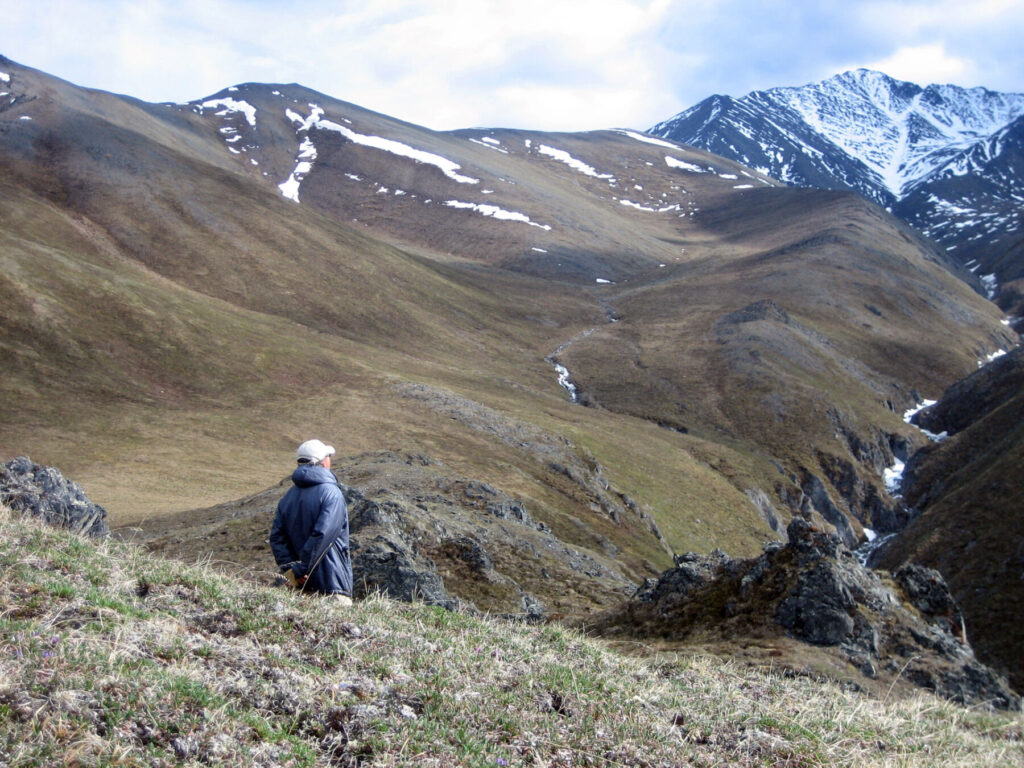
The Talkeetna River, Central Alaska (Best Multi-day Whitewater)
The Talkeetna River is a popular wilderness rafting river in central Alaska, offering an excellent multi-day adventure for beginners and intermediate rafters. Trips run up to 83 miles over three to four days ($2000 to 3000). The Class III-IV rapids make it one of the better whitewater trips in Alaska.
Rafters can enjoy stunning views of the surrounding mountains and forests, and spot abundant wildlife, such as moose, eagles, and bears. Accessing the Talkeetna River usually requires a 2-hour drive north from Anchorage to the town of Talkeetna, where most rafting companies operate. From there, rafters will travel upriver in a plane to the starting point in the Talkeetna Mountains, and the trip usually ends in the Susitna River with transportation back to Talkeetna.
Conclusion
Alaska has numerous multi-day wilderness rafting rivers for rafters of all levels of experience and interest. Each river offers a unique and breathtaking experience, with stunning views of untouched landscapes and abundant wildlife. Check out some wilderness rafting trips in the lower 48 states that are easier to access. You might also enjoy our article about minimizing the risk of wildlife when rafting in Alaska.
Start Planning Your Best Adventure
Dispatches from adventure tours around the world and tips for intrepid travelers. Read Our Blog
Guide to Whales of Baja California, Mexico
Vast and awe-inspiring, there are few experiences more thrilling than exploring the ocean on an adventure travel trip. From multi-sport adventures in Belize to small ship cruises in Alaska, there are countless ways to experience the wonder and beauty of the ocean.
Wildlife Safety on Rafting Trips in Alaska
Alaska’s wilderness comes the risk of encountering dangerous animals, including bears, wolves, and moose. Outfitters take extensive precautions to keep guests safe, but it’s important for rafters to understand how to minimize risks when facing Alaska’s formidable wildlife. This guide will break down safety measures for black, brown, and polar bears as well as other dangerous animals, with an emphasis on how commercial rafting outfitters manage these risks.
Discover Alaskan Small Ship Cruises
A land of stunning beauty, Alaskan small ship cruises offer visitors the opportunity to explore remote wilderness areas and rugged coastline. One of the best ways to experience this incredible landscape, these voyages provide an up-close and personal look at Alaska’s natural beauty and diverse culture, offering a truly unique adventure. From wildlife viewing to glacier exploration, there’s something for everyone on a small ship cruise.




